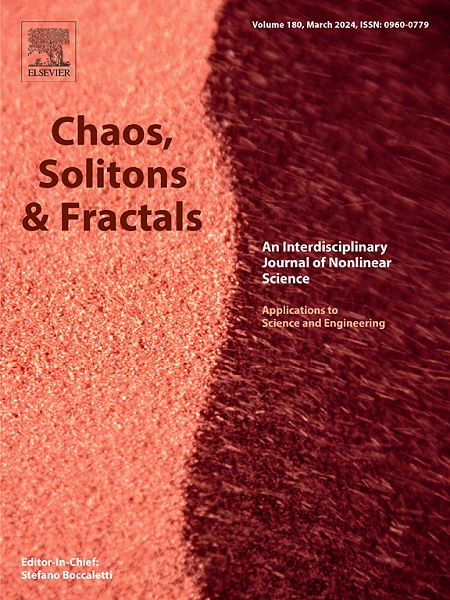Approximate solutions and multi-scale dynamical analysis: A study of predator-prey models under relaxation oscillations
IF 5.3
1区 数学
Q1 MATHEMATICS, INTERDISCIPLINARY APPLICATIONS
引用次数: 0
Abstract
This article aims to explore the asymptotic solutions of the spruce budworm system and conducting an in-depth analysis of its dynamical characteristics, particularly the existence of relaxation oscillations within the system. According to the geometric singular perturbation theory, the system is decomposed into fast and slow time scales, and quantitative and qualitative analyses are conducted for each. In terms of qualitative analysis, this paper delves into the stability of equilibrium points and the conditions for Hopf bifurcations and the formation of limit cycles. Furthermore, the study confirms the existence of relaxation oscillations in the system by applying Fenichel's theorem. In the quantitative analysis, this paper employs Vasil'eva's method to obtain the first-order approximate solution of the model for the first time, and based on this, derives a more precise expression for the system's period. Finally, the correctness and applicability of the theoretical analysis were verified through numerical simulations. To the best of our knowledge, this article provides, for the first time, a systematic first-order approximate solution for relaxation oscillations from a quantitative analysis perspective. While significantly improving the accuracy of the error approximation and the smoothness of the approximate solution, it also enhances the accuracy of the relaxation oscillation period. These works are unprecedented in the literature, at least for models like the one discussed in this study.
近似解与多尺度动力学分析:弛豫振荡下的捕食者-猎物模型研究
本文旨在探讨云杉budworm系统的渐近解,并深入分析其动力学特性,特别是系统内存在的松弛振荡。根据几何奇异摄动理论,将系统分解为快、慢两个时间尺度,分别进行定量和定性分析。在定性分析方面,研究了平衡点的稳定性、Hopf分岔的条件和极限环的形成。进一步应用Fenichel定理,证实了系统中存在松弛振荡。在定量分析中,本文首次采用Vasil’eva的方法得到了模型的一阶近似解,并在此基础上推导出了系统周期更精确的表达式。最后,通过数值模拟验证了理论分析的正确性和适用性。据我们所知,本文首次从定量分析的角度提供了松弛振荡的系统一阶近似解。在显著提高误差逼近精度和近似解平滑度的同时,也提高了松弛振荡周期的精度。这些工作在文献中是前所未有的,至少对于本研究中讨论的模型来说是这样。
本文章由计算机程序翻译,如有差异,请以英文原文为准。
求助全文
约1分钟内获得全文
求助全文
来源期刊

Chaos Solitons & Fractals
物理-数学跨学科应用
CiteScore
13.20
自引率
10.30%
发文量
1087
审稿时长
9 months
期刊介绍:
Chaos, Solitons & Fractals strives to establish itself as a premier journal in the interdisciplinary realm of Nonlinear Science, Non-equilibrium, and Complex Phenomena. It welcomes submissions covering a broad spectrum of topics within this field, including dynamics, non-equilibrium processes in physics, chemistry, and geophysics, complex matter and networks, mathematical models, computational biology, applications to quantum and mesoscopic phenomena, fluctuations and random processes, self-organization, and social phenomena.
 求助内容:
求助内容: 应助结果提醒方式:
应助结果提醒方式:


